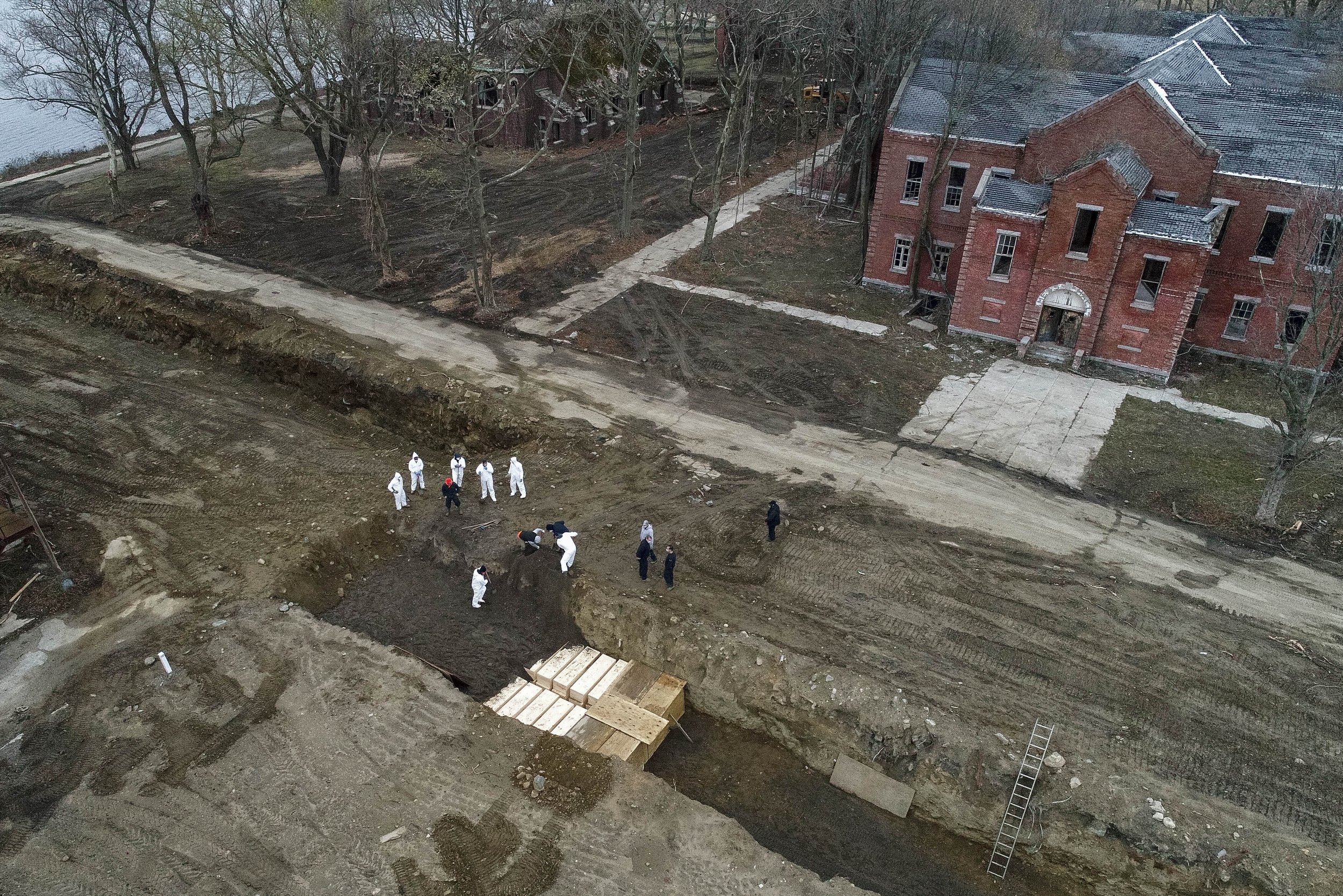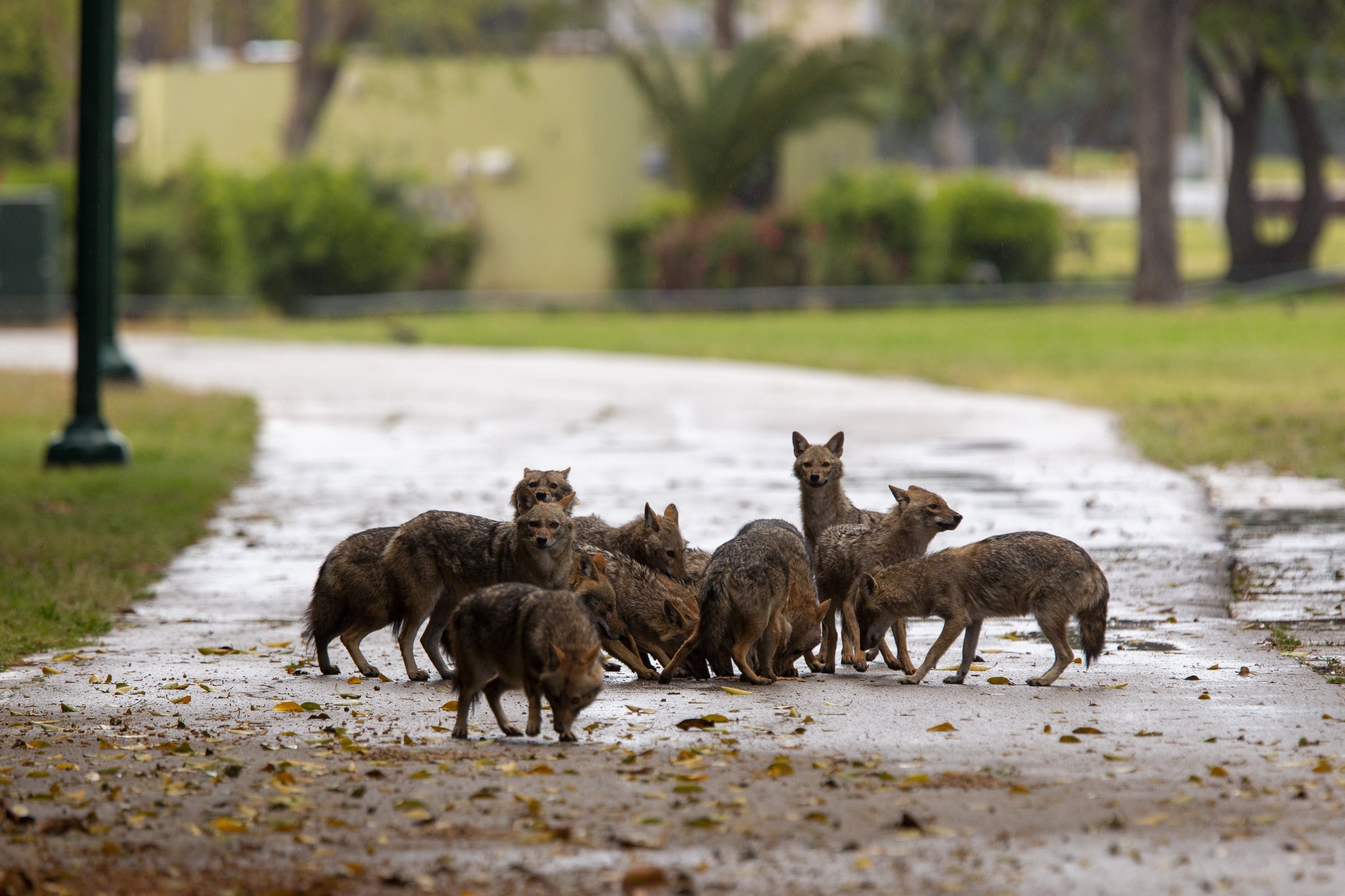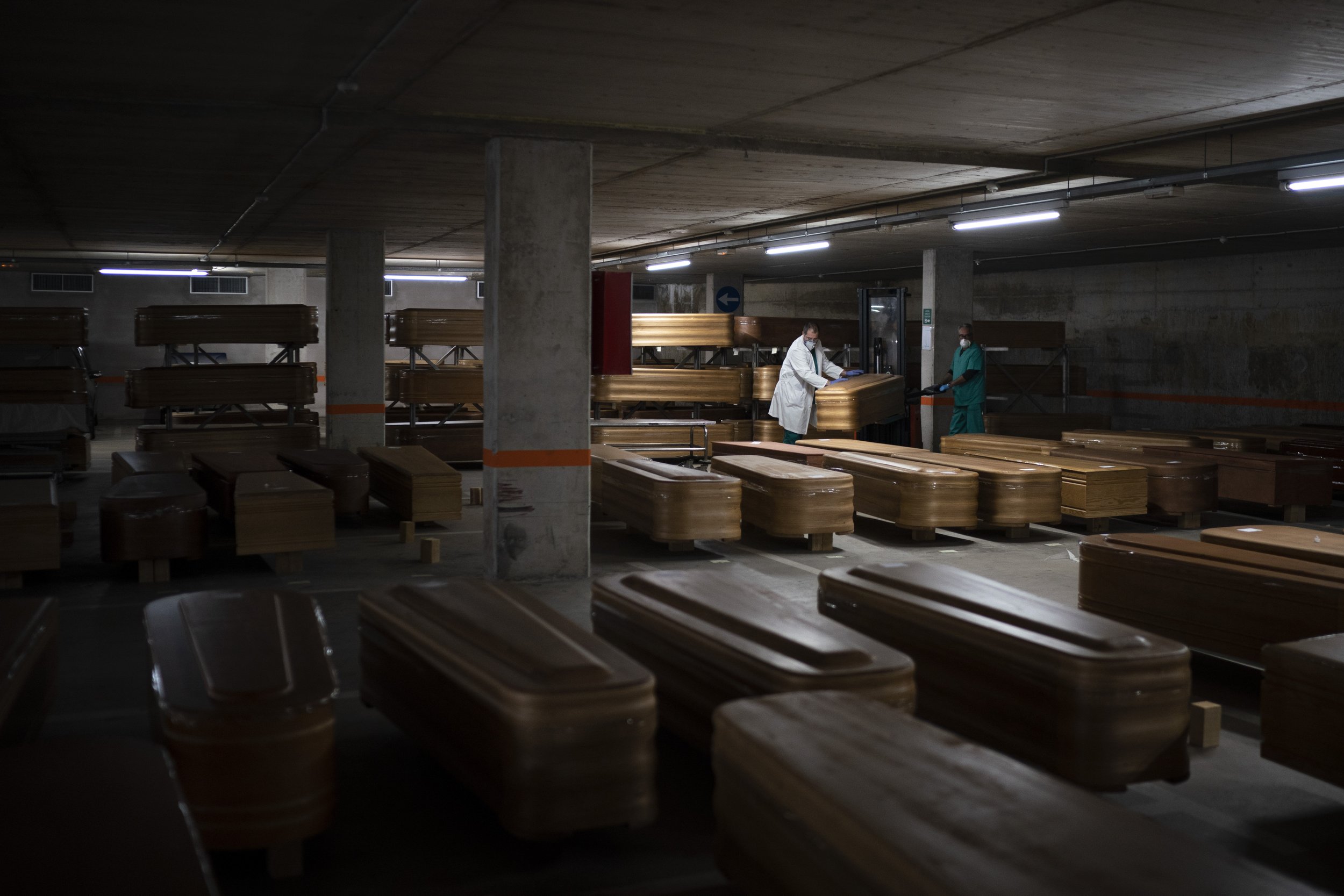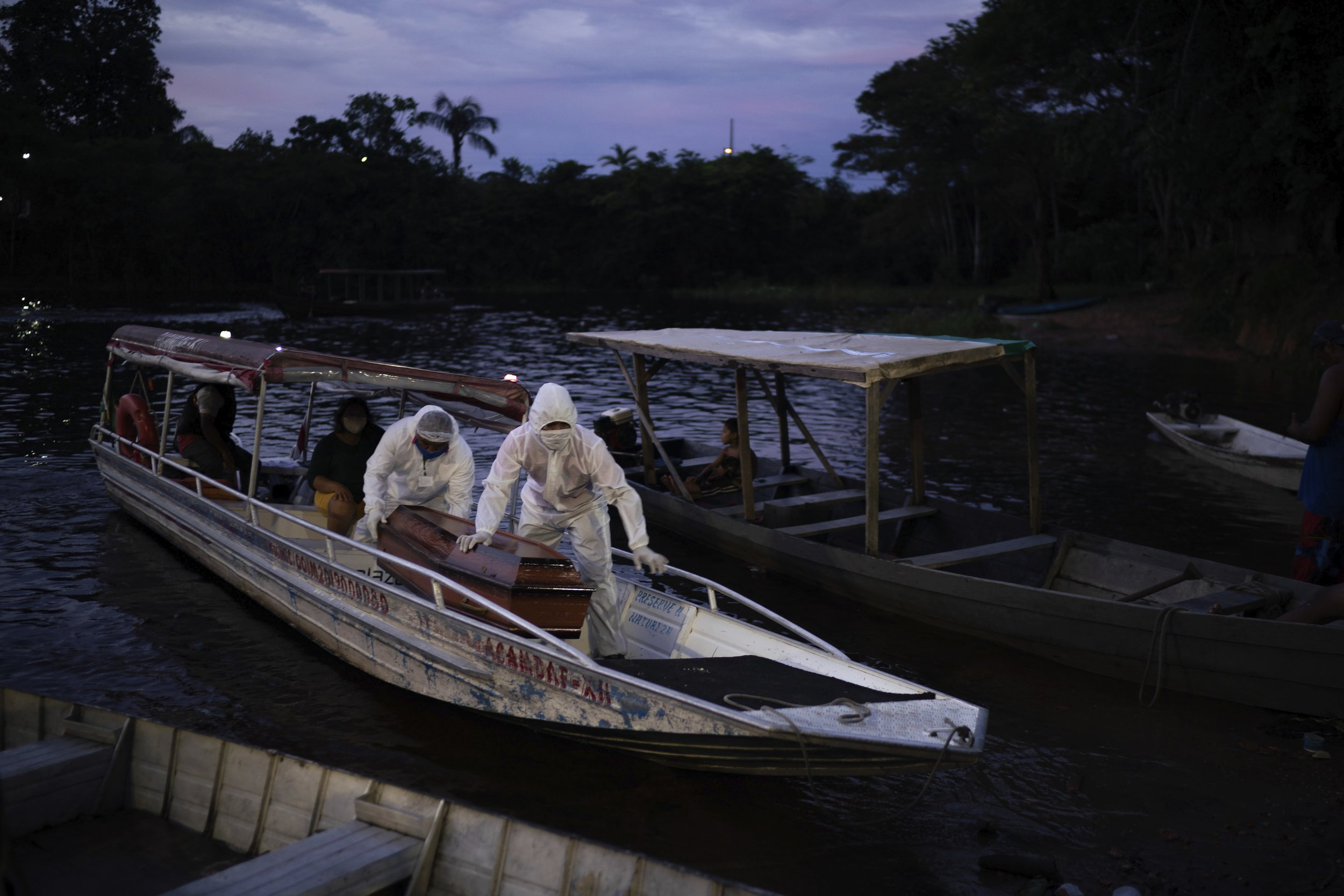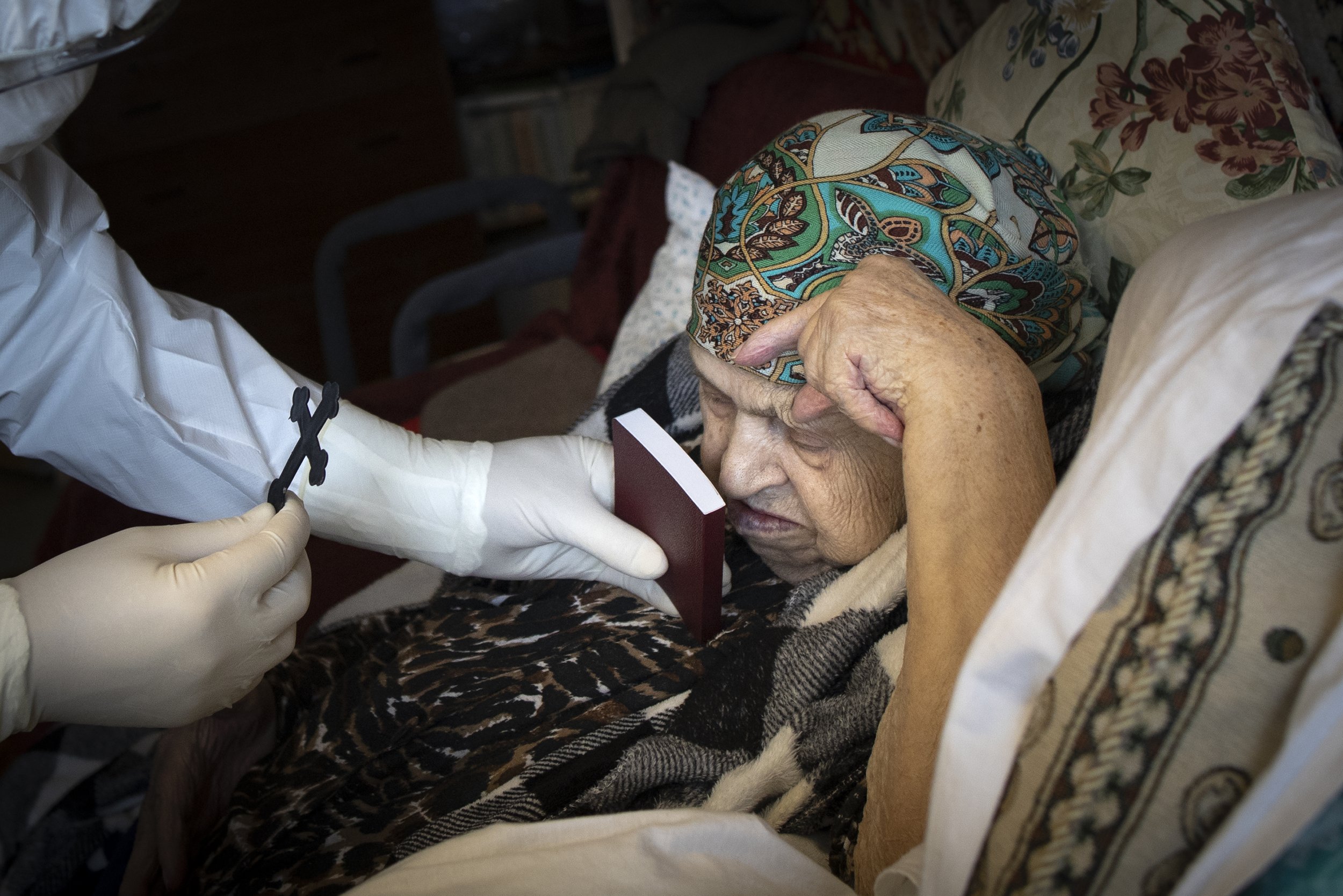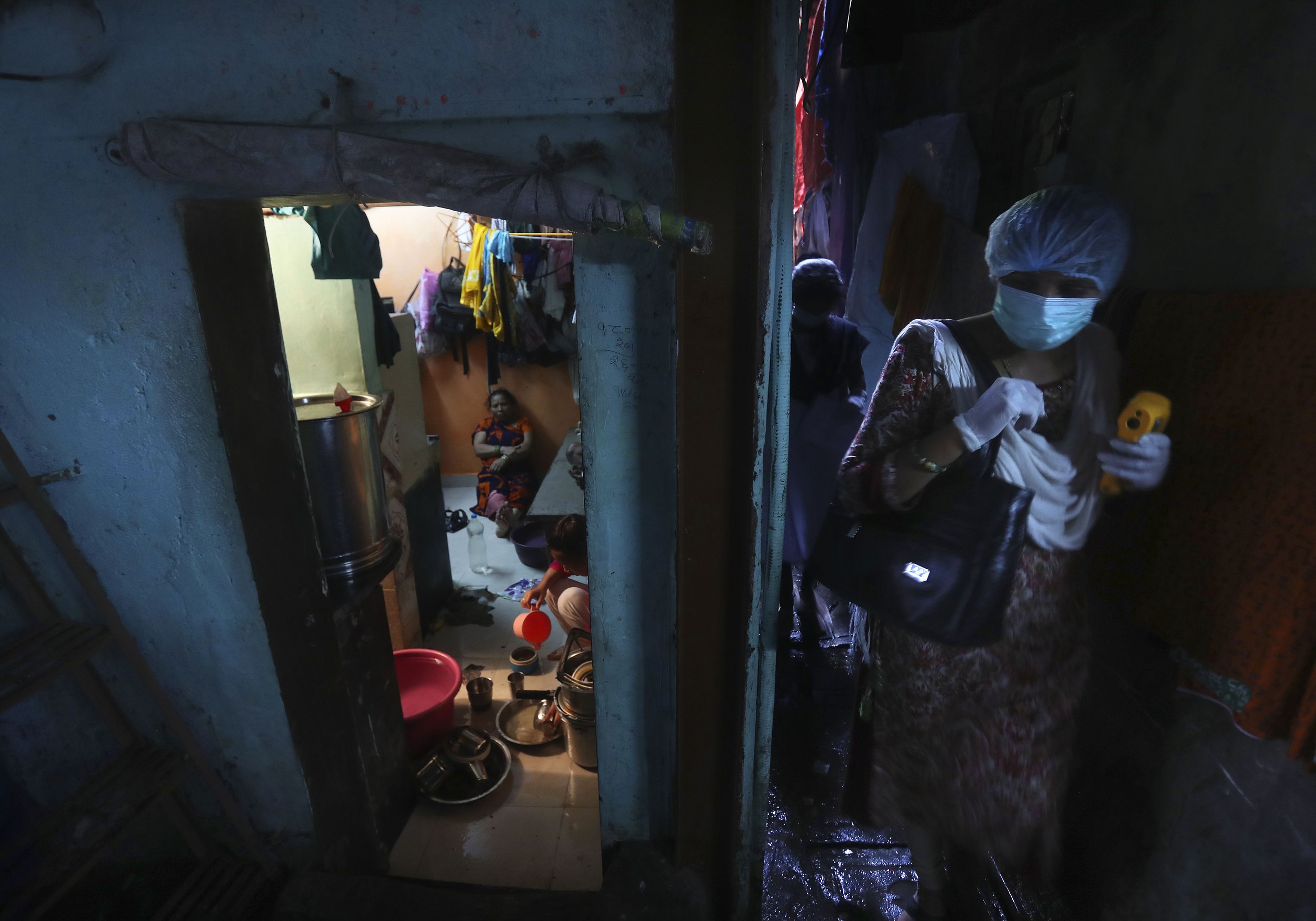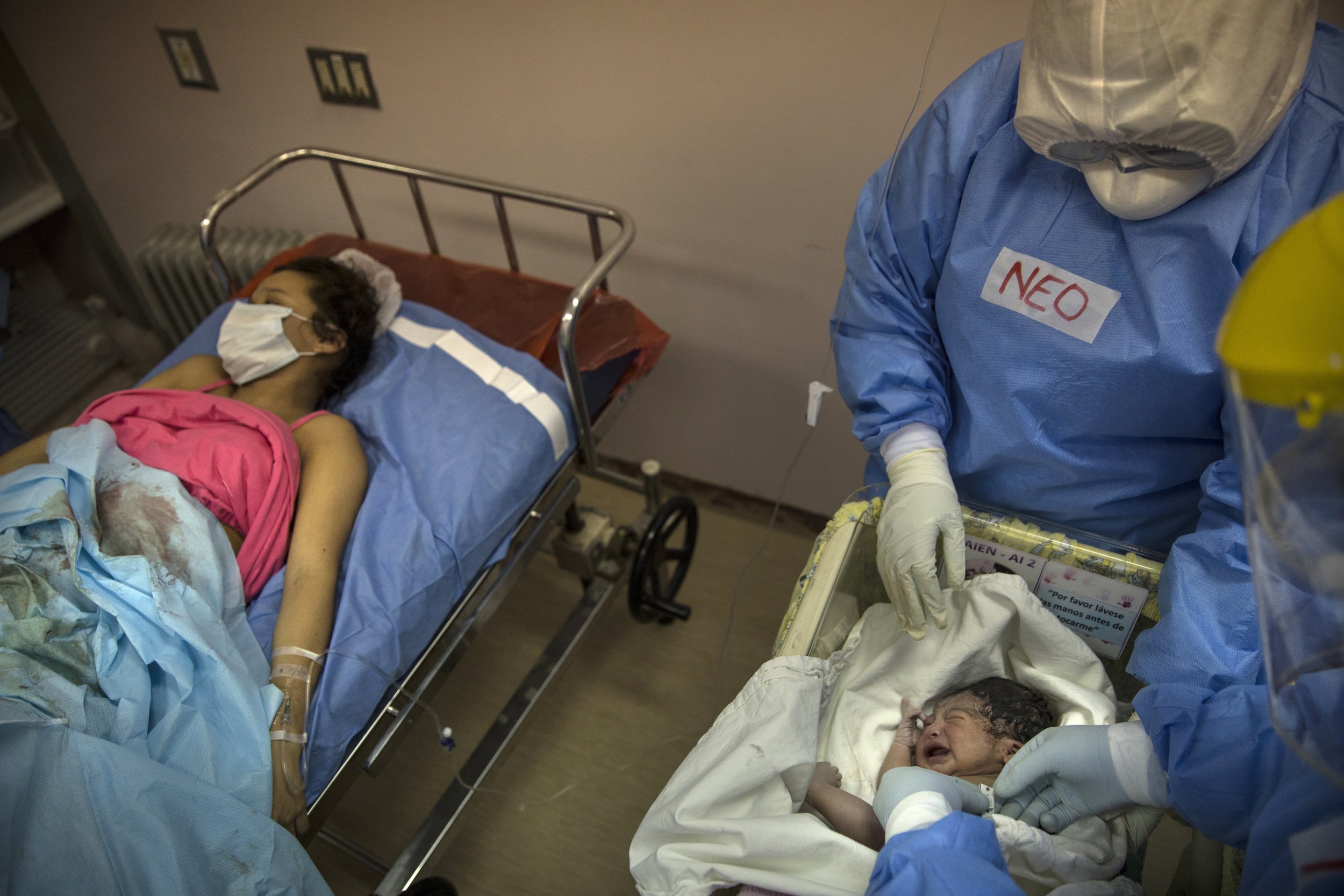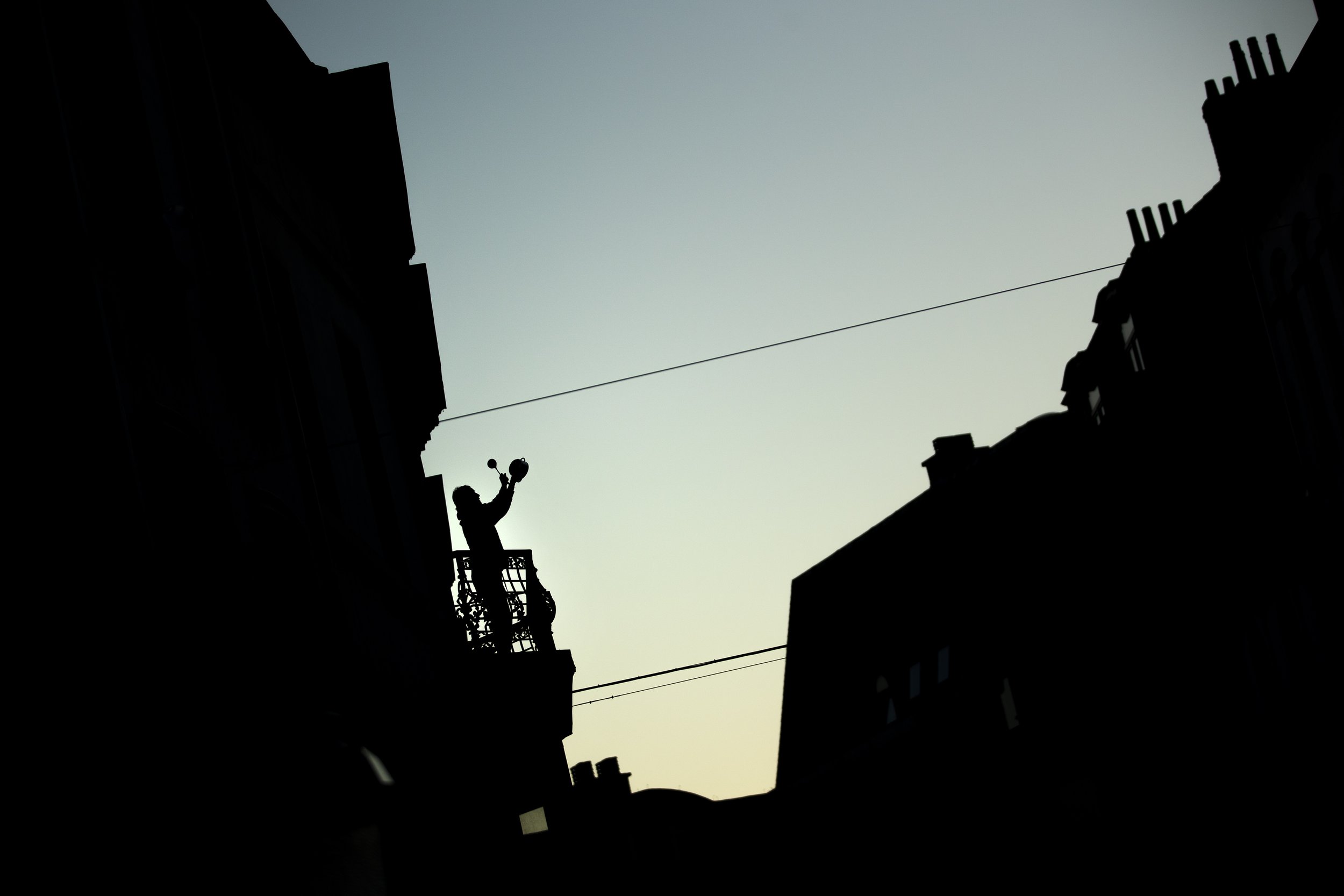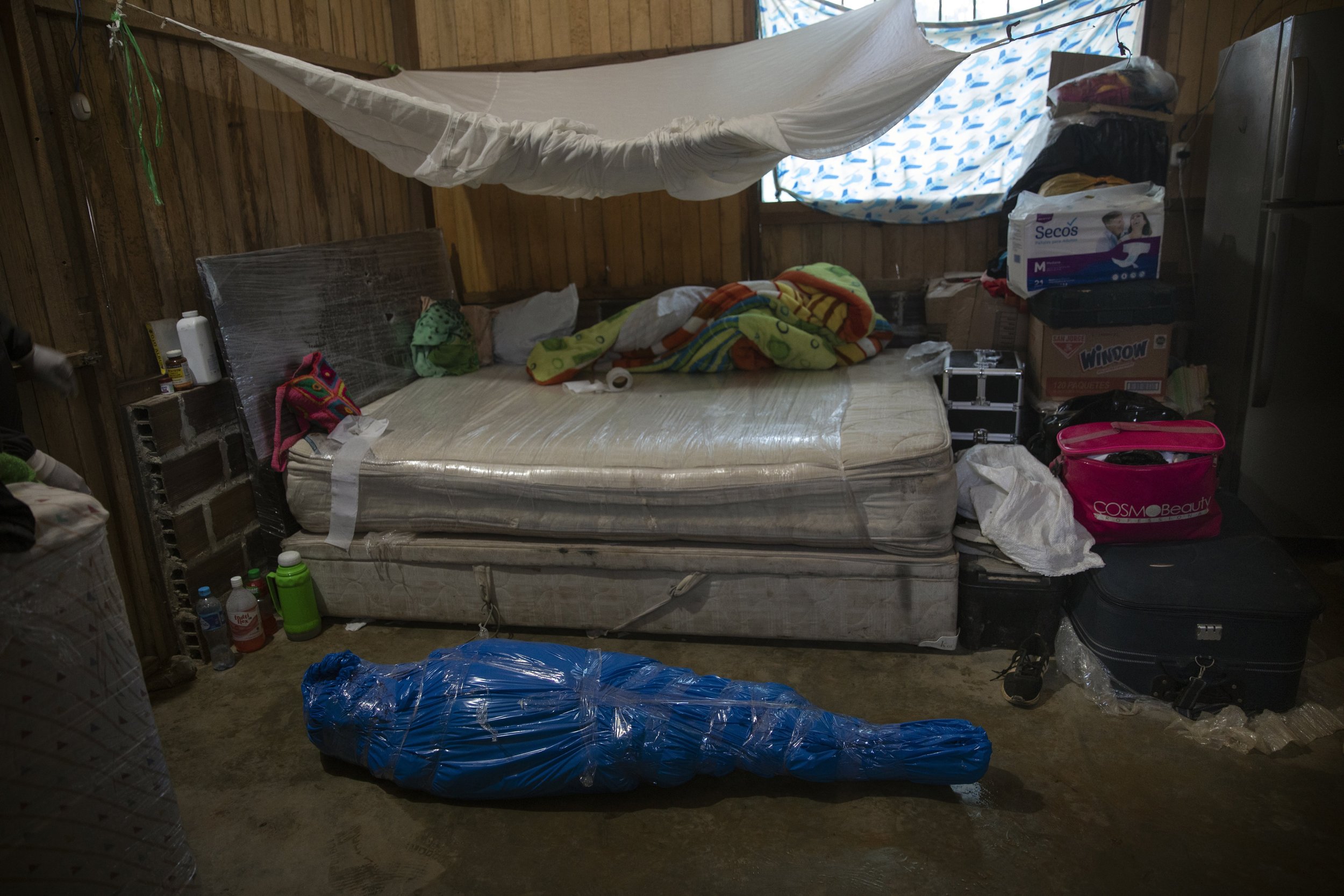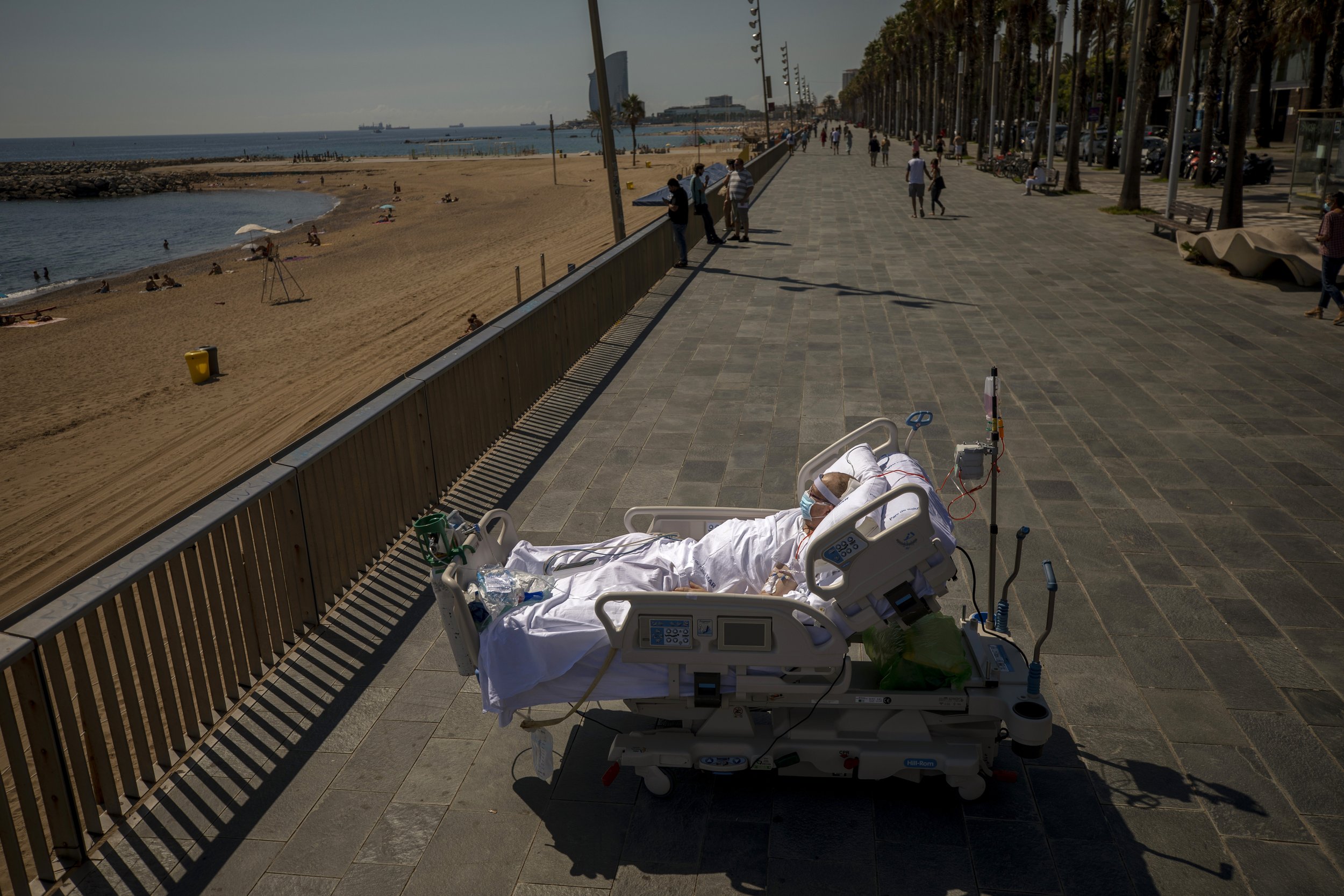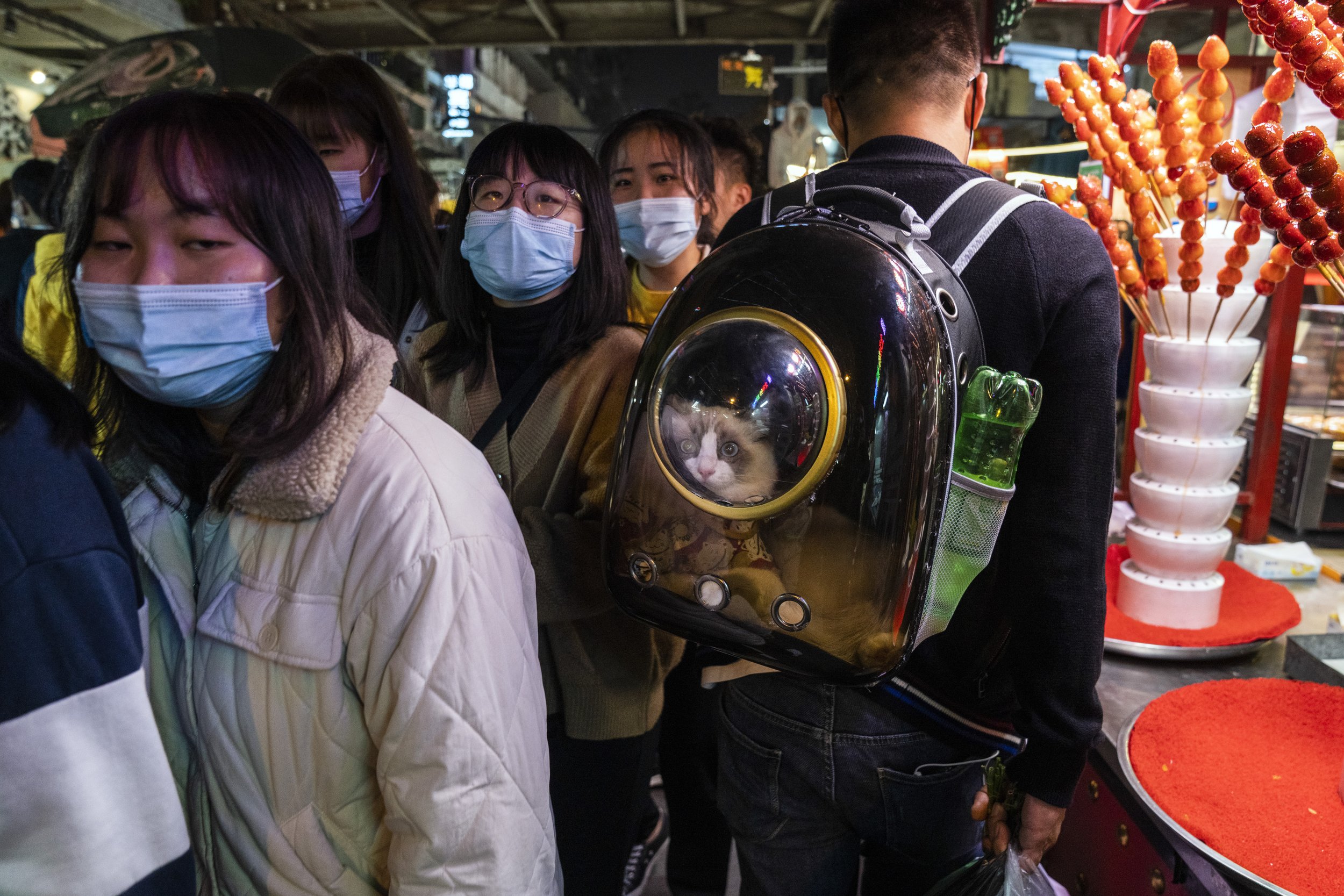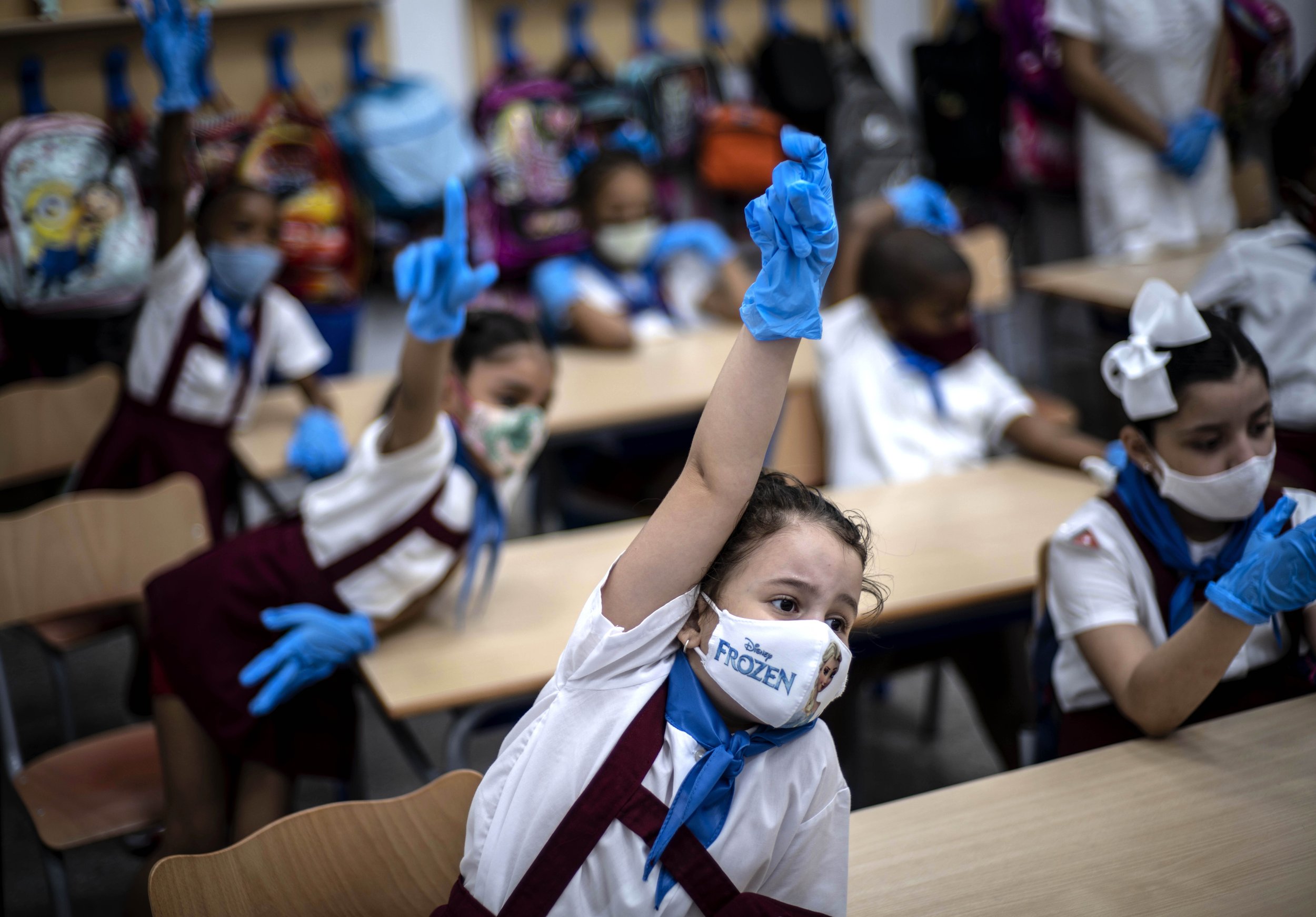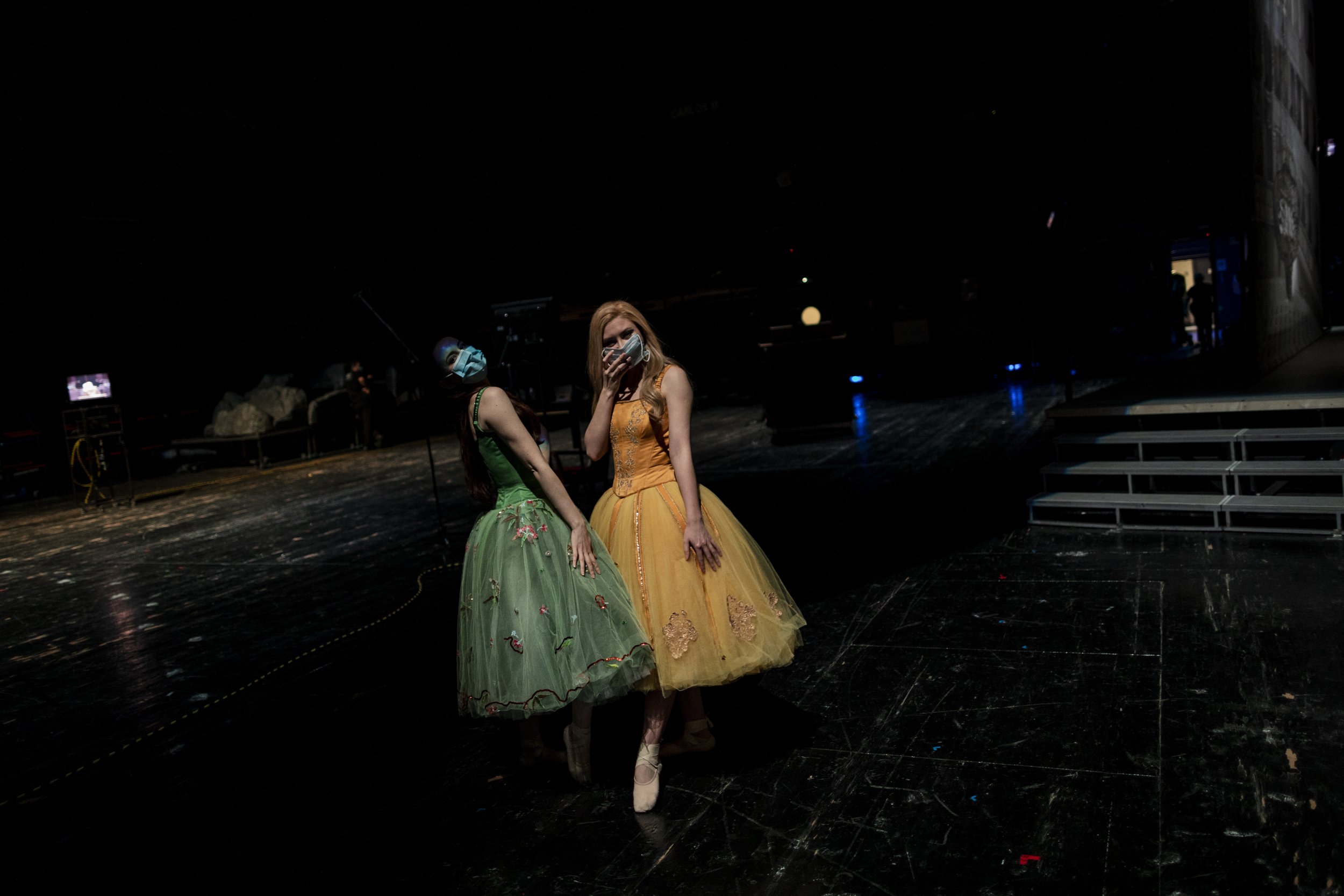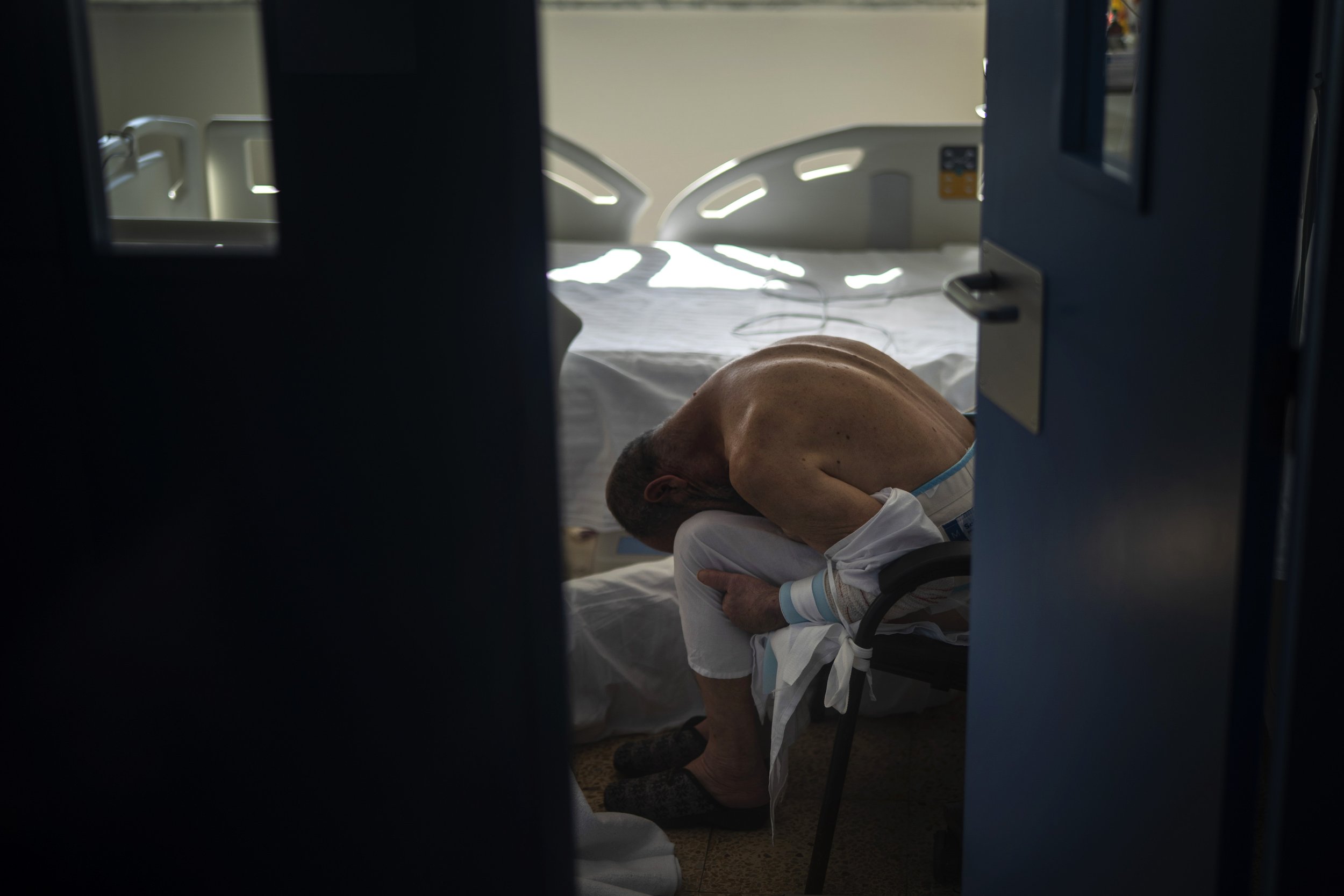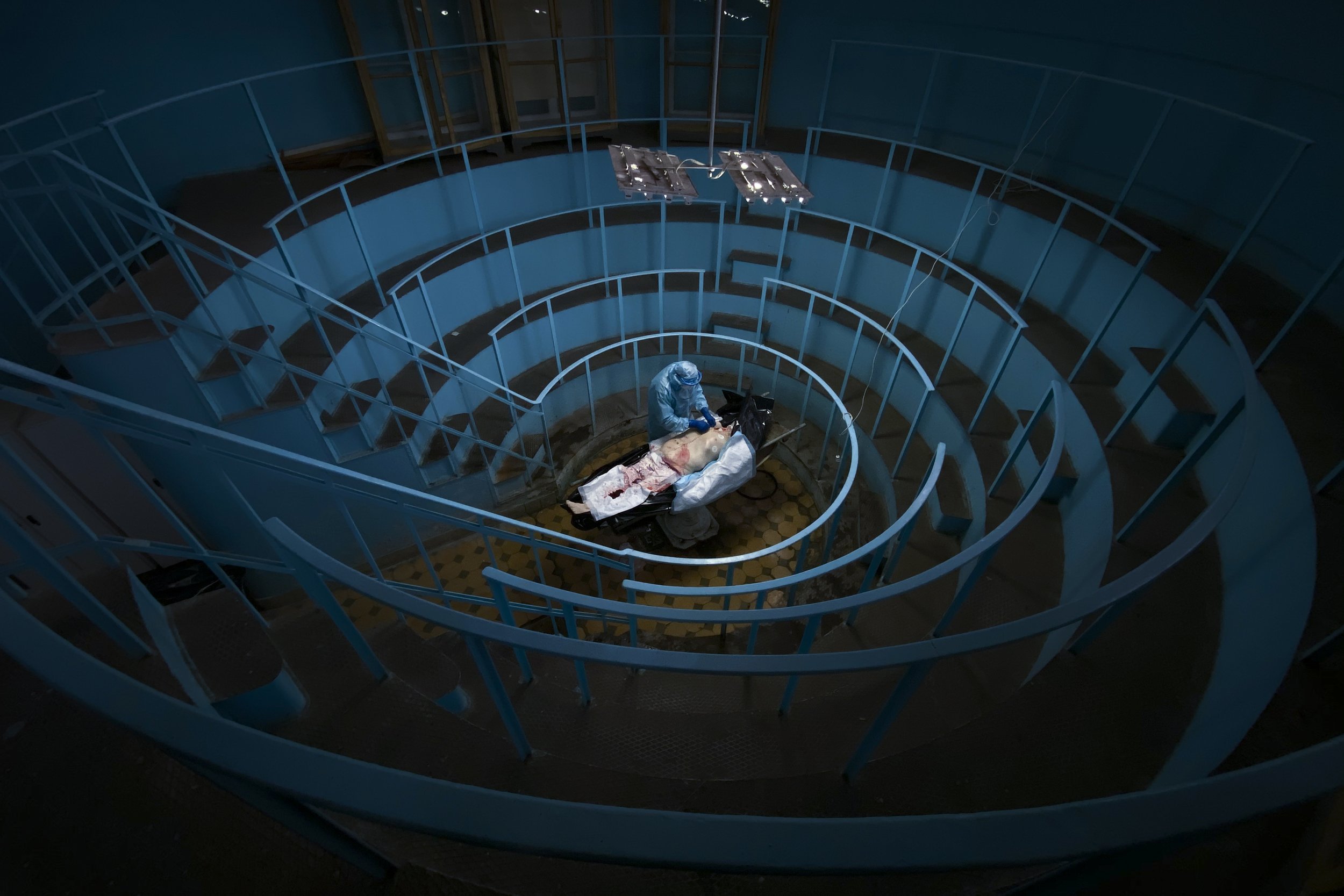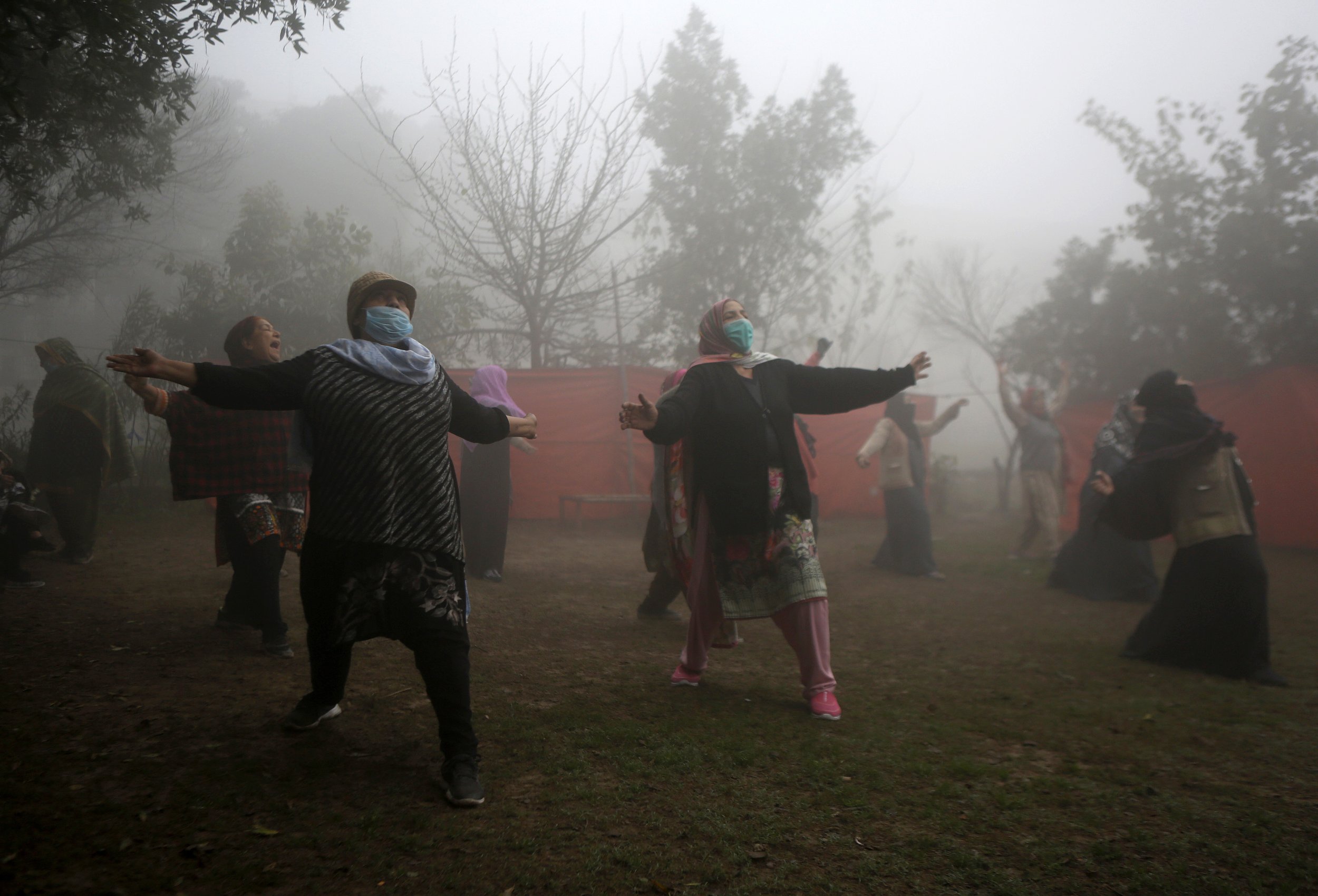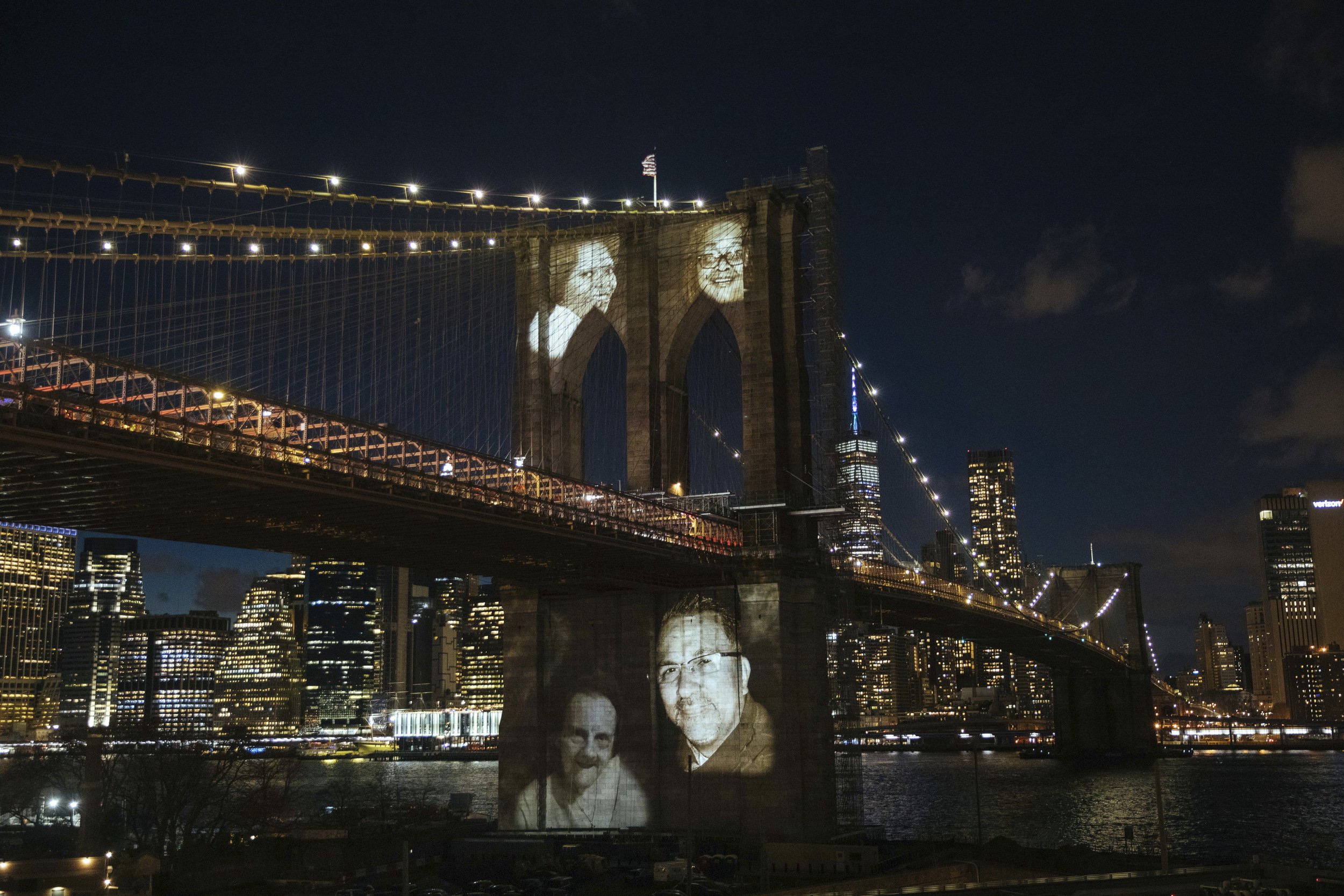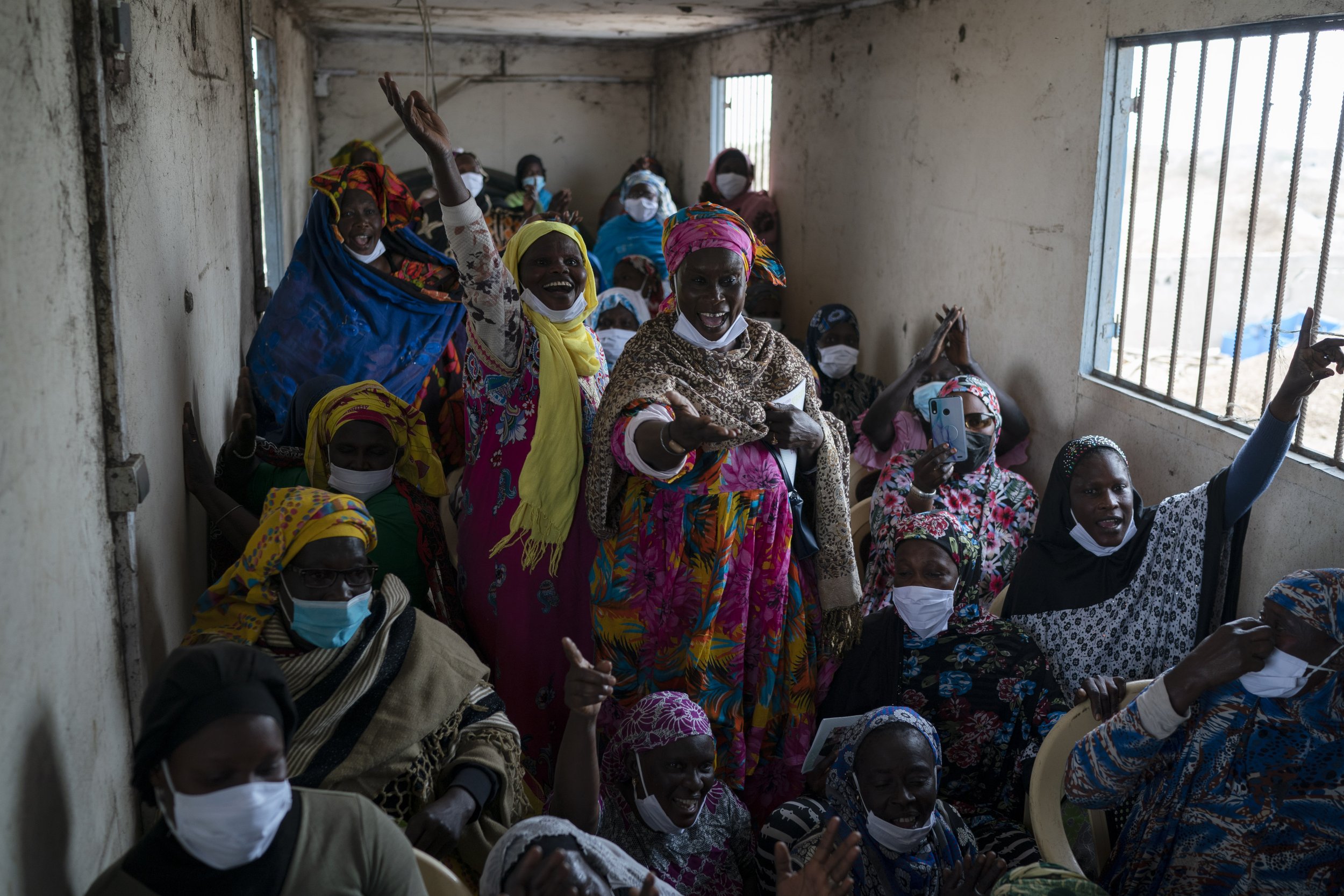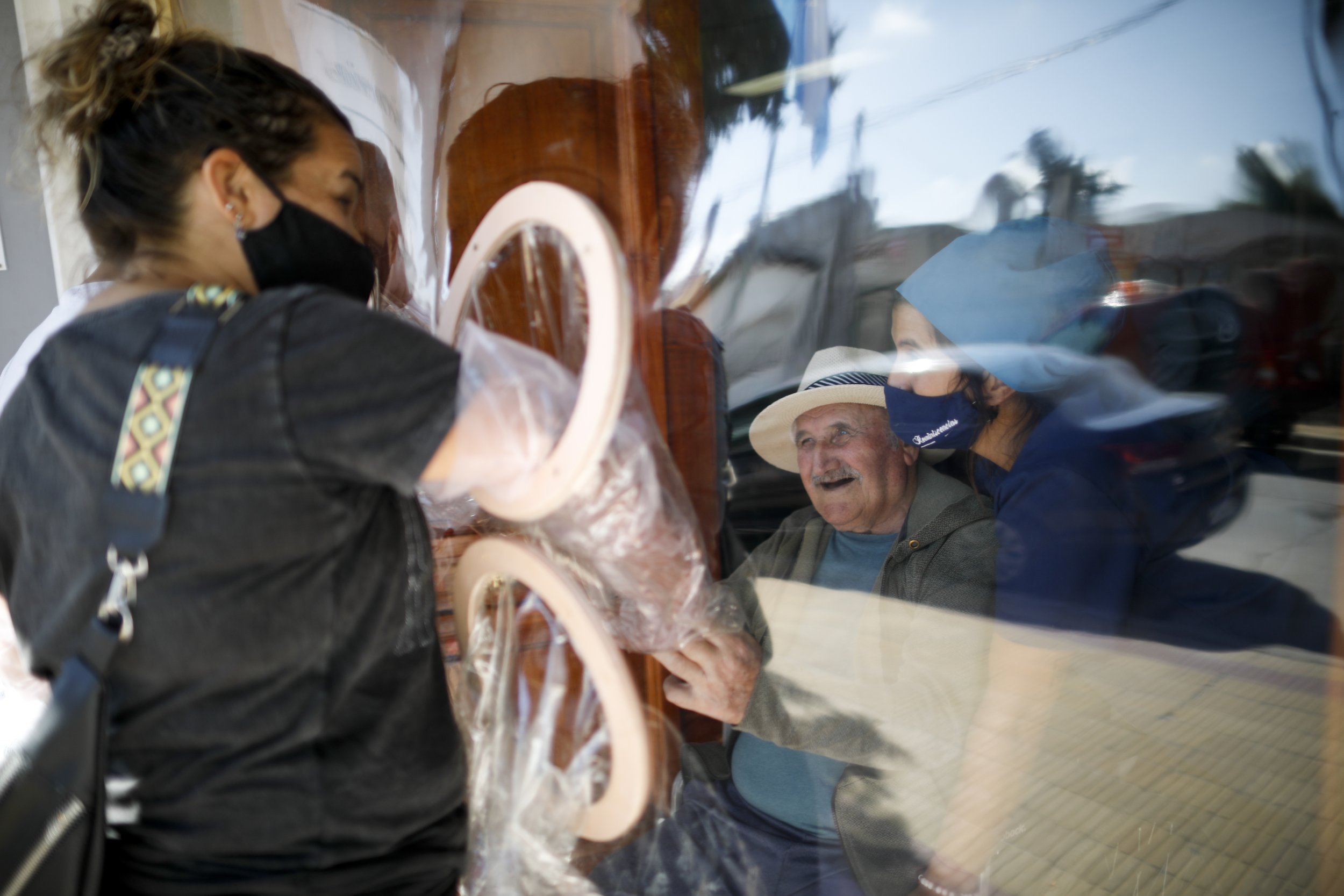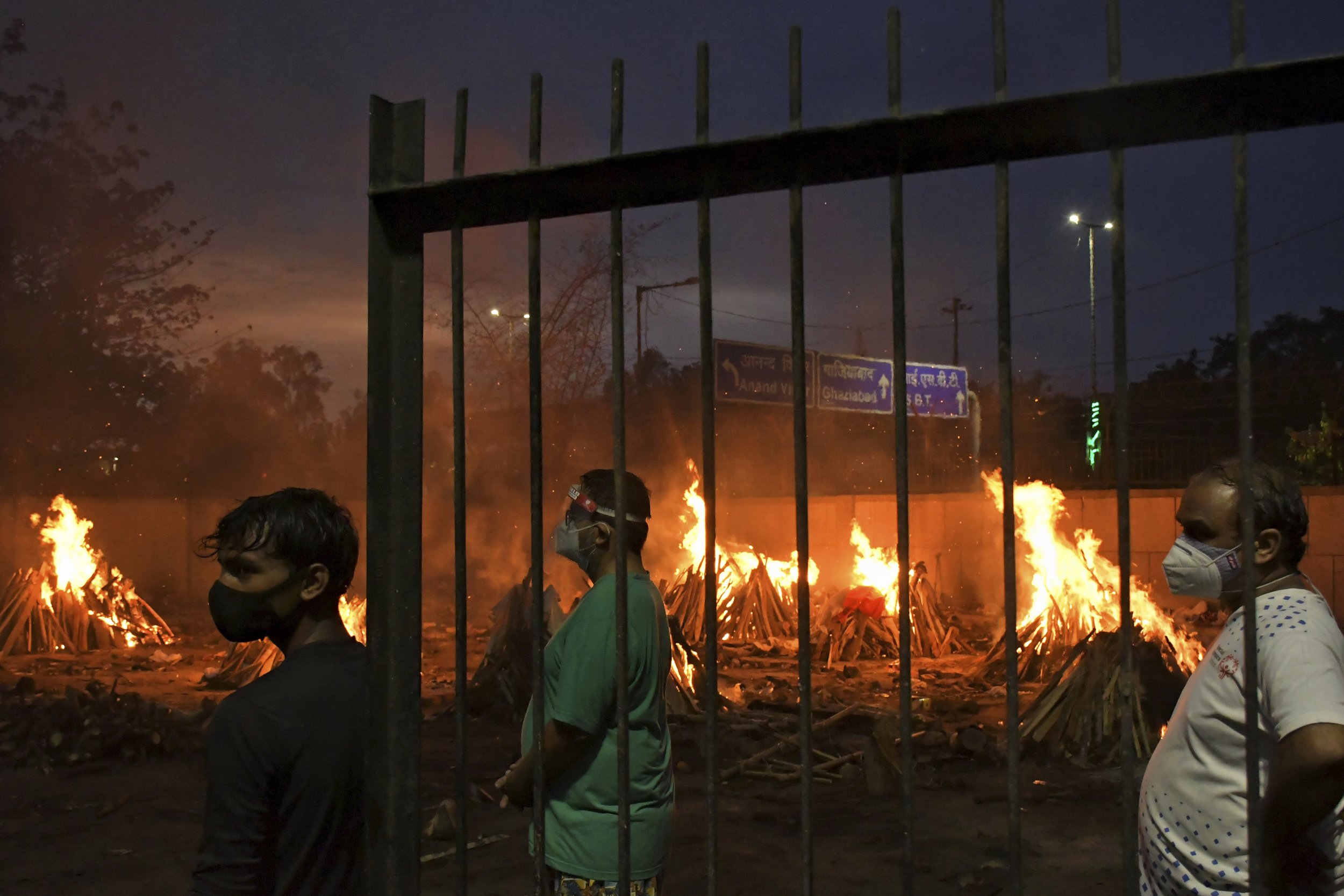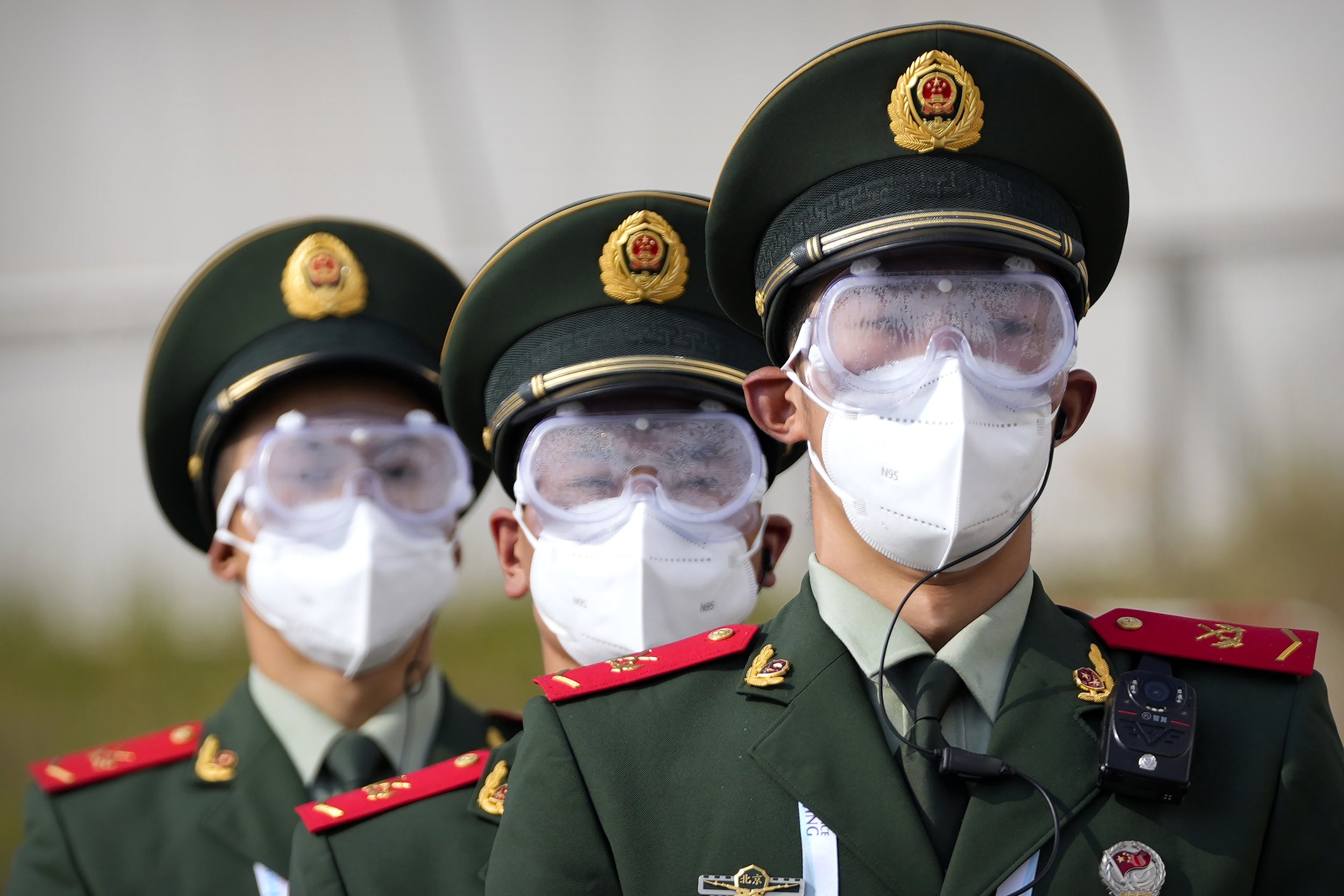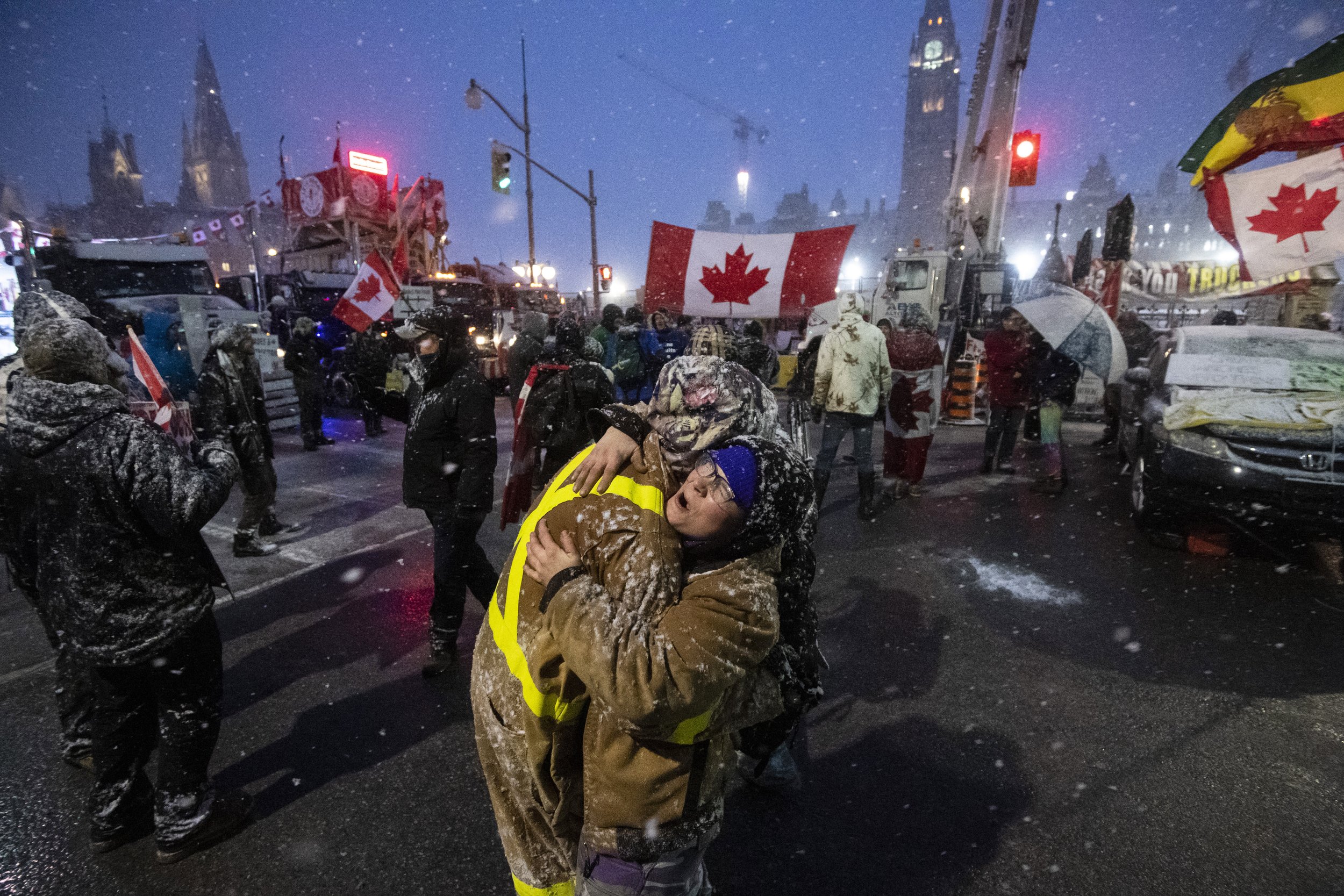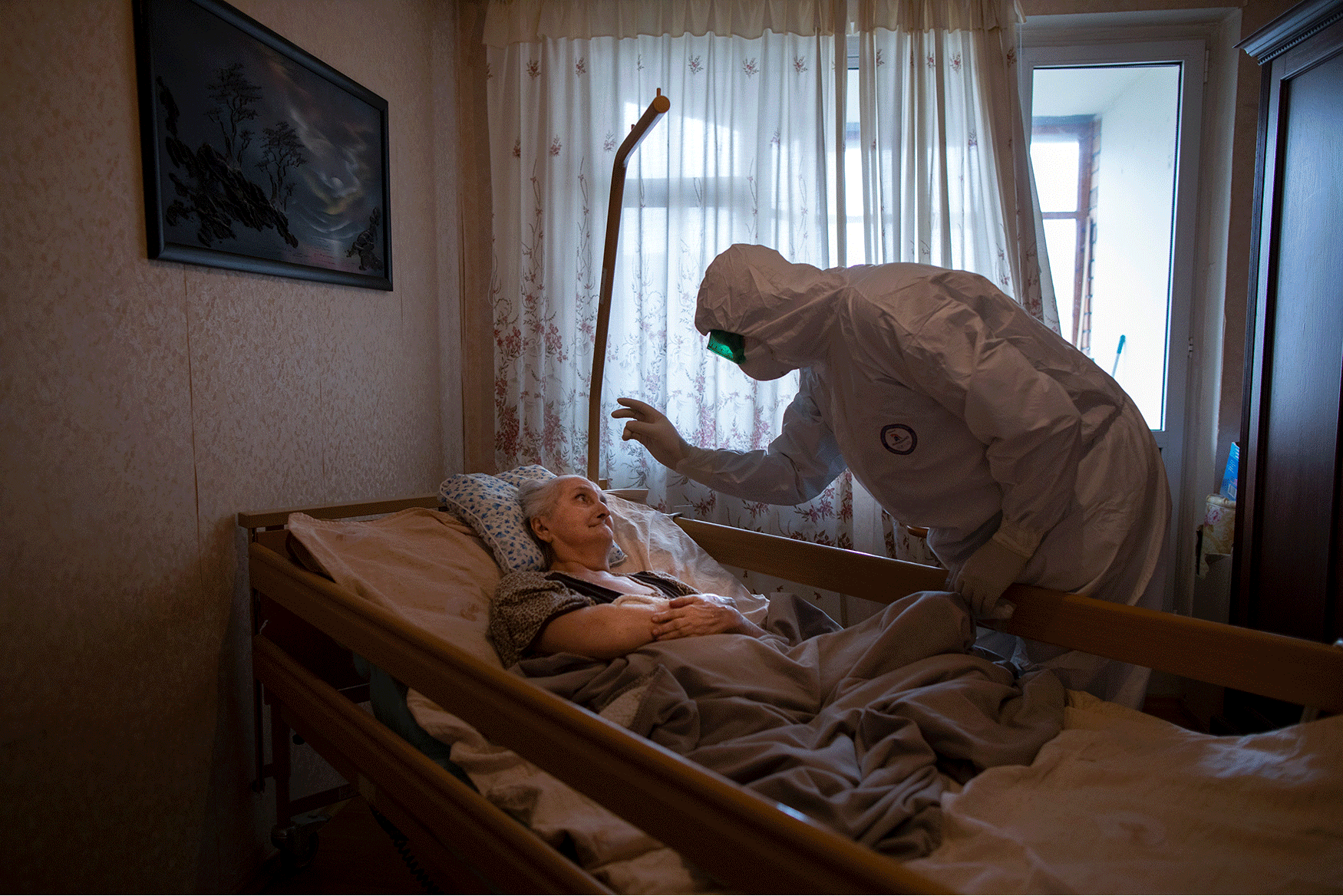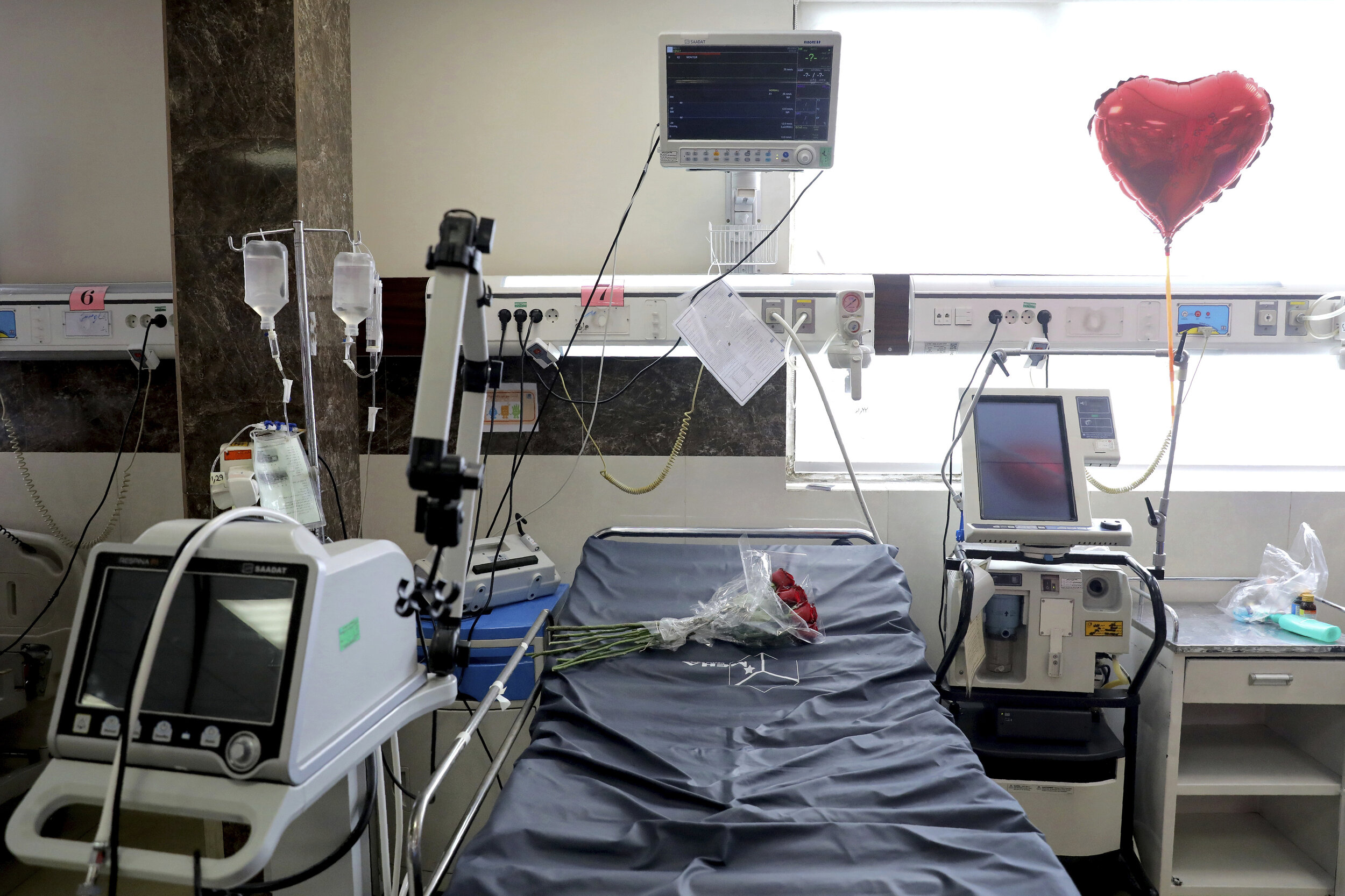2 years of images tell the story of the pandemic

It has been two years since families who were happily planning futures or settling into their golden years had everything cruelly yanked away by an enemy they could not prepare for: COVID-19.
A 24-year-old first-time mother in Lima, Peru, sobbing because the baby girl she just delivered would never meet her father. A 64-year-old California woman embracing her husband through tears and his last breaths in a hospital COVID-19 unit. Then there were the dead who had to be temporarily buried in a trench in New York City's Hart Island, with only workers clad in protective gear nearby.
Friday marks the two-year anniversary of the World Health Organization declaring the coronavirus a full-on pandemic, a pivotal moment in an outbreak that would go on to kill more than 6 million people around the globe.
Images taken by Associated Press photographers since then capture the devastation and disruption from the pandemic in every corner of the world.
Romelia Navarro, 64, weeps while hugging her husband, Antonio, in his final moments in a COVID-19 unit at St. Jude Medical Center in Fullerton, Calif., July 31, 2020. (AP Photo/Jae C. Hong)
From the onset of the pandemic, simple errands suddenly required well thought-out game plans. In Wuhan in central China, residents in one neighborhood had to climb onto chairs to order meat or vegetables from masked vendors behind special barriers. A woman in Argentina settles for holding her elderly father's hand through a plastic sleeve because physical contact at his senior living facility is forbidden. A Maryland woman's grandchildren clamor to help release doves at her funeral, which was delayed for two months because of social distancing protocols.
Then there was how to care for the dead. Cleric women wearing protective clothing as well as “chador,” a head-to-toe garment, carefully preparing the body of a coronavirus victim for a funeral in Iran. Funeral workers using a boat to take a coffin holding an 86-year-old woman suspected of dying of COVID-19 down a river in Brazil. In India, residents in New Delhi said goodbye to loved ones on burning funeral pyres at the site of a makeshift crematorium.
Cleric women wearing protective clothing and "chador," a head-to-toe garment, arrive a cemetery to prepare the body of a victim who died from the new coronavirus for a funeral, in the city of Ghaemshahr, in north of Iran, Thursday, April 30, 2020. (AP Photo/Ebrahim Noroozi)
Residents climb onto chairs to buy groceries from vendors behind barriers used to seal off a neighborhood in Wuhan in central China's Hubei province on Friday, April 3, 2020. (AP Photo/Ng Han Guan)
Blanca Ortiz, 84, celebrates after learning from nurses that she will be dismissed from the Eurnekian Ezeiza Hospital, on the outskirts of Buenos Aires, Argentina, on Aug. 13, 2020, several weeks after being admitted with COVID-19. (AP Photo/Natacha Pisarenko)
But in all that darkness, there were small victories. An 84-year-old woman in Buenos Aires, Argentina, who spent weeks hospitalized for the virus pumps her fists in celebration after learning she will be discharged. In Barcelona, a 60-year-old man who was in the ICU for more than 50 days lies in a hospital bed on a promenade, taking in the view of the Mediterranean sea as part of his recovery. A woman in Brussels bangs a pot on her balcony during lockdown, exemplifying the renewed admiration for health care workers around the world.
In 2021, a glimmer of hope arrived with COVID-19 vaccines. Overcoming fears about them was almost as hard as the trek to get the doses out. A healthcare worker dedicated to vaccinating shepherds and nomadic herders in Indian-controlled Kashmir succeeds in vaccinating a woman inside a hut. Virtual reality goggles distract an 8-year-old boy in Israel as he gets the jab, which was finally approved for children ages 5-11.
Israeli child Rafael Peled, 8, looks through a VR virtual reality goggles as he receives a Pfizer COVID-19 vaccine from medical staff at the Sheba Tel Hashomer Hospital in Ramat Gan, Israel, Monday, Nov. 22, 2021. (AP Photo/Oded Balilty)
Still, two years later, as hope of “normal” emerges with fewer hospitalizations and cases, there is chaos around the pandemic and policy. Just last month as patients in Hong Kong were relegated to beds under canopies outside hospitals, anti-vaccine mandate protesters sang and danced in Canada during demonstrations that shut down sections of the capital.
As the protests were broken up in Canada, the global death toll from COVID-19 was approaching 6 million. But vaccination levels, plus the tens of millions of people with protection from earlier infections, have given health leaders hope that the worst days may be in the past.
Text from AP News story, AP PHOTOS: 2 years of images tell the story of the pandemic


